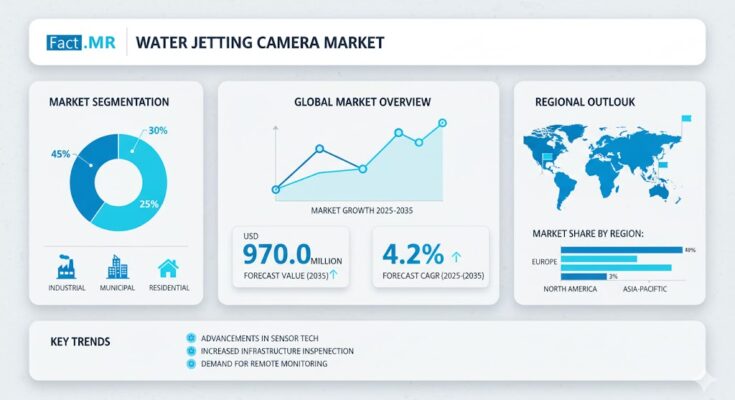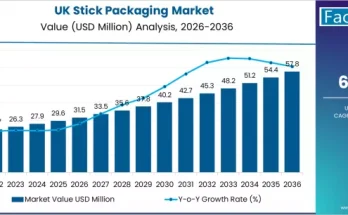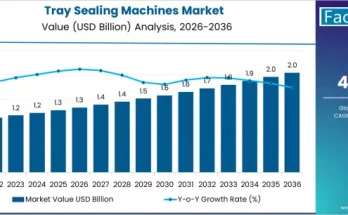The global water jetting camera market is projected to experience steady expansion, increasing from USD 640.0 million in 2025 to USD 970.0 million by 2035, according to a recent report by Fact.MR. This marks an absolute growth of USD 330.0 million, translating into a total increase of 51.6% and a CAGR of 4.2% over the forecast period (2025–2035).
As governments and industries intensify efforts toward infrastructure maintenance, urban drainage management, and pipeline rehabilitation, water jetting cameras are emerging as indispensable tools for precision-based inspection, cleaning, and monitoring applications.
Strategic Market Drivers
Infrastructure Rehabilitation and Urban Sanitation Upgrades
The surge in global infrastructure renewal—particularly in wastewater, stormwater, and sewer networks—is a primary driver of the water jetting camera market. Municipalities and industrial operators are increasingly investing in advanced inspection systems to improve maintenance efficiency, minimize downtime, and extend the operational life of critical assets.
Water jetting cameras allow operators to simultaneously clean and inspect pipelines, offering real-time visual feedback that enhances accuracy and safety. Their growing use in municipal sanitation projects, industrial drainage, and energy pipeline maintenance underscores their indispensable role in modern infrastructure management.
Technological Advancements and Smart Integration
Manufacturers are embedding AI-assisted analytics, 3D visualization, and IoT connectivity into water jetting cameras, transforming them into intelligent diagnostic tools. These systems can now detect blockages, corrosion, and cracks with greater precision while automatically generating inspection reports for predictive maintenance.
The integration of digital inspection platforms and cloud-based data management enables end-users to monitor assets remotely, improving decision-making and operational transparency.
Environmental Regulations and Preventive Maintenance Demand
With stricter environmental and water quality regulations, the need for non-invasive, sustainable pipeline inspection technologies has increased. Water jetting cameras support eco-friendly cleaning by reducing chemical usage and water waste, aligning with global initiatives toward greener industrial practices.
Additionally, industries are prioritizing preventive maintenance over reactive repairs, leading to higher adoption of inspection systems that deliver long-term operational reliability.
Browse Full Report: https://www.factmr.com/report/water-jetting-camera-market
Regional Growth Highlights
North America: Infrastructure Renewal and Smart Utilities
North America represents a significant market, propelled by aging water infrastructure, smart city investments, and EPA-driven compliance mandates. The U.S. continues to lead in adopting robotic and AI-integrated inspection systems for municipal and industrial applications.
Europe: Regulation-Driven Innovation
Europe’s stringent environmental regulations and commitment to circular water management are accelerating the deployment of advanced camera-based inspection systems. Countries such as Germany, the U.K., and France are heavily investing in smart water technologies to enhance efficiency and reduce leakage rates.
East Asia: Rapid Urbanization and Industrial Expansion
East Asia, led by China, Japan, and South Korea, is witnessing strong growth due to rapid industrialization and government-backed urban sanitation programs. The region’s robust manufacturing ecosystem supports the production of high-quality, cost-efficient water jetting camera systems tailored for municipal and industrial needs.
Emerging Markets: Infrastructure Investments in the Middle East, South Asia, and Latin America
Emerging economies are increasingly embracing water jetting inspection technologies as they modernize their infrastructure. Expanding oil & gas, mining, and wastewater management sectors in these regions are fostering substantial market opportunities.
Market Segmentation Insights
By Camera Type
- Axial Cameras: Ideal for straight pipelines and basic inspections.
- Pan & Tilt Cameras: Enable 360° visual coverage for comprehensive pipe assessments.
- Self-Leveling Cameras: Ensure stable imagery in complex pipeline geometries.
By Application
- Municipal Sewer & Drainage Systems
- Industrial Cleaning and Inspection
- Oil & Gas Pipelines
- Power Generation & Energy Utilities
By End User
- Municipal Authorities
- Industrial Maintenance Contractors
- Utility Service Providers
- Infrastructure Inspection Agencies
Challenges and Market Considerations
Despite the optimistic growth trajectory, the market faces several key challenges:
- High Initial Costs: Advanced camera systems with robotics and AI integration require significant capital investment.
- Operational Skill Gaps: Skilled operators are essential for interpreting inspection data and ensuring system efficiency.
- Maintenance and Calibration Needs: Regular servicing is critical to maintain accuracy in harsh environments.
- Data Security Concerns: The rise of connected inspection systems heightens the need for robust cybersecurity frameworks.
Competitive Landscape
The global water jetting camera market is characterized by innovation-led competition and technological differentiation. Leading manufacturers are investing in AI-driven image analytics, wireless communication systems, and ruggedized hardware to enhance performance across challenging field conditions.
Key Players in the Water Jetting Camera Market:
- Envirosight
- IBAK Helmut Hunger
- Mini-Cam
- CUES
- Rausch
- RIDGID
- Hathorn
- Deep Trekker
- Insight Vision
- Subsite
- Aries Industries
- Camtronics
- Vivax-Metrotech
These companies are expanding global distribution networks, offering integrated inspection and reporting software, and tailoring solutions for municipal and industrial sectors.
Recent Developments
- 2024 – Envirosight launched an AI-enabled crawler system with cloud-based inspection reporting for real-time diagnostics.
- 2023 – Deep Trekker introduced a modular robotic inspection platform combining water jetting and imaging capabilities for deep pipeline maintenance.
- 2022 – IBAK unveiled a compact pan-and-tilt camera series optimized for narrow pipelines, enhancing maneuverability and clarity.
Future Outlook: Smart, Sustainable, and Predictive Inspection
The next decade will redefine the water jetting camera market as digital transformation, AI integration, and sustainability take center stage. The convergence of robotics, machine learning, and data-driven inspection analytics will empower utilities and industries to shift toward predictive maintenance ecosystems.
With robust growth in infrastructure modernization, urban sanitation, and industrial inspection, the global water jetting camera market is poised for steady, innovation-led expansion. Manufacturers that focus on automation, user-friendly interfaces, and environmental compliance will lead the next era of intelligent water management and asset integrity solutions.



